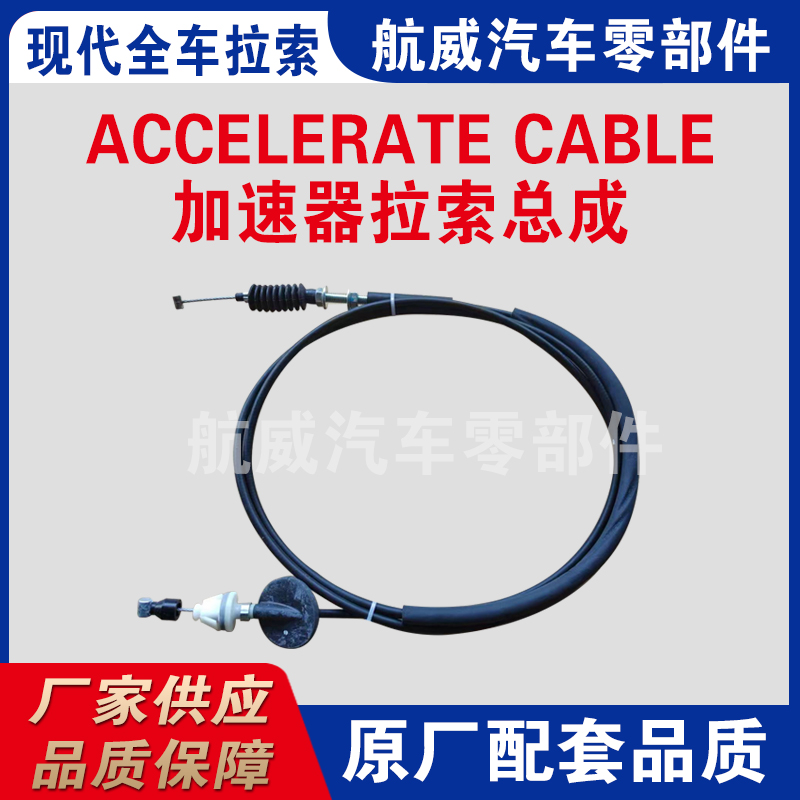Understanding the Mechanisms of Push-Pull Throttle Cable Operation and Functionality
Understanding Push-Pull Throttle Cables Mechanics and Applications
In the world of mechanical engineering and automotive design, the push-pull throttle cable serves an essential purpose, operating as a critical component in the control mechanisms of various vehicles and machines. Designed to facilitate smooth throttle operation, these cables allow the user to adjust the throttle position effectively, influencing engine performance and response. Understanding the working principles, applications, and benefits of push-pull throttle cables can enhance our appreciation for their role in modern engineering.
Mechanics of Push-Pull Throttle Cables
At its core, a push-pull throttle cable consists of a flexible housing that contains an inner wire running through it. When a user pulls on one end of the cable, it engages the inner wire to move, which in turn affects the throttle valve's position in the engine. The push-pull mechanism allows the cable to transmit both pushing and pulling forces, making it highly efficient for applications that require precise control over the throttle.
The cable assembly typically includes a casing that is designed to withstand wear, heat, and mechanical stress, ensuring longevity in demanding environments. The inner wire is often made from high-tensile steel, contributing to its durability and resistance to stretching over time. Depending on the specific application, the throttle cable can be outfitted with various end fittings, such as hooks or eyelets, that connect to throttle levers or electronic throttle controls.
Applications in Various Industries
Push-pull throttle cables are widely used across multiple industries due to their versatility and reliability. In the automotive sector, they play a pivotal role in connecting the gas pedal to the engine's throttle body. When the driver accelerates, the push-pull action of the cable directly influences the airflow into the engine, resulting in increased power output and vehicle response.
Beyond automobiles, these cables are also prevalent in marine applications, where they control throttle settings on outboard motors and inboard engines. The ability to make fine adjustments to engine speed is crucial in boating, where navigating various water conditions requires responsive control.
push pull throttle cable

Moreover, push-pull throttle cables find applications in agricultural machinery, such as tractors and combines, where they regulate engine power for different tasks, ensuring efficient operation during planting, harvesting, and transporting goods. In motorcycles and other two-wheeled vehicles, these cables offer a straightforward method for controlling throttle while maintaining an ergonomic design that accommodates speed adjustments with minimal physical exertion.
Advantages of Push-Pull Throttle Cables
One of the primary benefits of using push-pull throttle cables is their simplicity and ease of installation. Unlike electronic throttle systems, which may require complex wiring and electronic control units, mechanical throttle cables can be installed quickly and are generally easier to troubleshoot. This simplicity makes them a preferred choice in applications where reliability and ease of maintenance are priorities.
Another advantage is their responsiveness. Push-pull throttle cables provide a direct mechanical connection between the throttle control and the engine throttle body. This enables instantaneous feedback and allows operators to make rapid adjustments, which is especially vital in high-performance scenarios, such as racing or quick maneuvers in construction equipment.
Additionally, the durability of push-pull throttle cables ensures that they can withstand the rigors of their environments. With proper care and maintenance, these cables can last for years, reducing the need for frequent replacements and contributing to overall cost-efficiency in machinery operations.
Conclusion
In conclusion, push-pull throttle cables are foundational components in many mechanical systems, providing essential control over engine performance and responsiveness across various industries. Their simplicity, durability, and responsiveness make them invaluable in applications ranging from automotive and marine to agricultural machinery. As technology continues to evolve, understanding and appreciating these mechanical marvels will ensure that we continue to leverage their benefits effectively in the future. Whether you’re a mechanic, an engineer, or simply an enthusiast of machinery, the push-pull throttle cable epitomizes the intersection of function, reliability, and innovation in mechanical design.
-
Upgrade Your Control with Premium Throttle CablesNewsAug.08,2025
-
Stay in Control with Premium Hand Brake CablesNewsAug.08,2025
-
Experience Unmatched Performance with Our Clutch HosesNewsAug.08,2025
-
Ensure Safety and Reliability with Premium Handbrake CablesNewsAug.08,2025
-
Enhance Your Vehicle with High-Performance Clutch LinesNewsAug.08,2025
-
Elevate Your Ride with Premium Gear CablesNewsAug.08,2025
